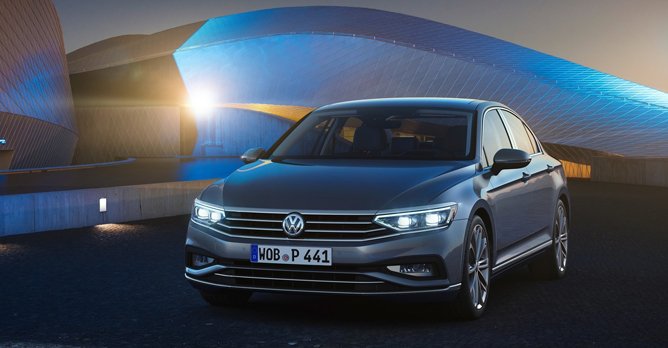Volkswagen updates its 2.0-litre diesel engine
31 Dec 2020|1,718 views
Clean and smooth-running - the 2.0-litre TDI, Volkswagen's most important diesel engine is now in new top form. Thanks to sophisticated twin dosing technology in the exhaust gas system, it undercuts the Euro 6d emission standard limits while also running quietly and smoothly.
The four-cylinder TDI engine with the internal designation EA288 made its debut in 2012. Six years later, it took an enormous development step forwards, and was therefore given the suffix 'evo'.

In 2019, the 2.0-litre diesel engine's technology was further updated for the new Golf. For this, a variant with lower output replaced the previous 1.6-litre TDI. The specifications stipulated that the engine had to comply with new Euro 6 emission standards while at the same time also running more smoothly.
Volkswagen opted for a dual-pronged strategy, better engine programming optimised the combustion process and reduced raw emissions, while twin dosing technology in the exhaust gas system converts the majority of nitrogen oxides into harmless substances.

Volkswagen developed twin dosing technology for exhaust gas treatment. Here, two Selective Catalytic Reduction (SCR) catalytic converters work together to split nitrogen oxides into water and nitrogen using AdBlue urea solution.
The first SCR catalytic converter is installed directly downstream of the engine. This has a volume of 3.4-litres and simultaneously acts as a particulate filter. Its task is to convert more than 90% of the nitrogen oxides when the exhaust gas temperature is between 220 and 350 degrees Celsius and the vehicle is being driven normally
Thanks to its close proximity to the engine, the first catalytic converter lights off shortly after a cold start. The second SCR catalytic converter is installed in the vehicle floor.
The catalytic converter installed further away from the engine performs the main share of nitrogen oxide conversion specifically at high loads and correspondingly high exhaust gas temperatures.
The exhaust gas, which can have a temperature of over 500 degrees Celsius when leaving the engine, has cooled down to approximately 350 degrees Celsius when it reaches this component and this once again permits high conversion rates to split nitrogen oxides into water and nitrogen.
The 2.0-litre TDI with clean twin dosing technology already powers many of the brand's models, including in the Golf, Tiguan, Passat and Arteon model series. It is also widely used at other Group brands, with both transverse and longitudinal configurations. Volkswagen is continuing to work intensively on further development of its successful diesel engine, one goal is operation in combination with a 48V mild hybrid system.
Clean and smooth-running - the 2.0-litre TDI, Volkswagen's most important diesel engine is now in new top form. Thanks to sophisticated twin dosing technology in the exhaust gas system, it undercuts the Euro 6d emission standard limits while also running quietly and smoothly.
The four-cylinder TDI engine with the internal designation EA288 made its debut in 2012. Six years later, it took an enormous development step forwards, and was therefore given the suffix 'evo'.

In 2019, the 2.0-litre diesel engine's technology was further updated for the new Golf. For this, a variant with lower output replaced the previous 1.6-litre TDI. The specifications stipulated that the engine had to comply with new Euro 6 emission standards while at the same time also running more smoothly.
Volkswagen opted for a dual-pronged strategy, better engine programming optimised the combustion process and reduced raw emissions, while twin dosing technology in the exhaust gas system converts the majority of nitrogen oxides into harmless substances.

Volkswagen developed twin dosing technology for exhaust gas treatment. Here, two Selective Catalytic Reduction (SCR) catalytic converters work together to split nitrogen oxides into water and nitrogen using AdBlue urea solution.
The first SCR catalytic converter is installed directly downstream of the engine. This has a volume of 3.4-litres and simultaneously acts as a particulate filter. Its task is to convert more than 90% of the nitrogen oxides when the exhaust gas temperature is between 220 and 350 degrees Celsius and the vehicle is being driven normally
Thanks to its close proximity to the engine, the first catalytic converter lights off shortly after a cold start. The second SCR catalytic converter is installed in the vehicle floor.
The catalytic converter installed further away from the engine performs the main share of nitrogen oxide conversion specifically at high loads and correspondingly high exhaust gas temperatures.
The exhaust gas, which can have a temperature of over 500 degrees Celsius when leaving the engine, has cooled down to approximately 350 degrees Celsius when it reaches this component and this once again permits high conversion rates to split nitrogen oxides into water and nitrogen.
The 2.0-litre TDI with clean twin dosing technology already powers many of the brand's models, including in the Golf, Tiguan, Passat and Arteon model series. It is also widely used at other Group brands, with both transverse and longitudinal configurations. Volkswagen is continuing to work intensively on further development of its successful diesel engine, one goal is operation in combination with a 48V mild hybrid system.
Latest COE Prices
April 2025 | 1st BIDDING
NEXT TENDER: 23 Apr 2025
CAT A$97,724
CAT B$117,899
CAT C$68,782
CAT E$117,002
View Full Results Thank You For Your Subscription.





















